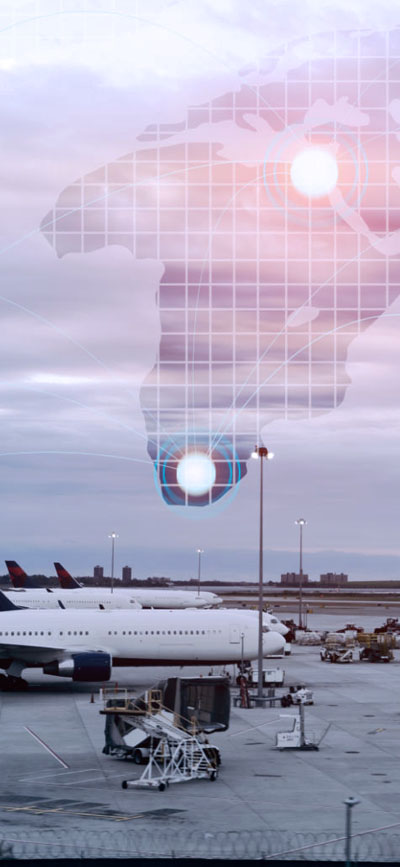The aviation sector has benefitting from the increasing level of connectivity and digitization across the value chain. These technological advancements allowed to have better security, operations and passenger experience both on the ground and in the air, making its industry one of the most advanced in its use of technology standards, among all the transportation modes. However, it is one of the critical infrastructure systems that is not only vulnerable to physical threats, but even more to cyber threats

Airport Cybersecurity Threat Mitigation and Cyber Resilience Controls
Beyond physical security, cyber threats to the internal airport operations are emerging concerns with which they should contend.
Cybercriminals are always seeking to exploit vulnerabilities at airports and ways to breach cybersecurity defenses. Public Wi-Fi at airports, for instance, poses a major security risk due to ad hoc connections, unencrypted networks, malware attacks, credentials theft, among others. Securing systems in airports from cyber threats requires strong cyber security measures and routine cyber vulnerability assessments. Apart from the traditional IT infrastructure, several potential targets for cyber attacks exist within the realm of internal airport operations :
- Access control and perimeter intrusion systems
- Credentialing and Document management systems
- Radar systems
- Supervisory Control and Data Acquisition
Implementing Cyber-Security Measures in Airports to Improve Cyber-Resilience
It’s clear that airports has a lot of work to do in order to respond more for the increased risk of cyberattacks. It is also imperative for them to have up-to-date cybersecurity policies and procedures which should be made available and apply to not only the IT and cybersecurity personnel but the workforce in general. IT-Towers, with knowledge of the aviation industry and broad expertise in cybersecurity, play a significant role in helping the airports, to better assess their defensive measures against cybercriminals, to put them in a much stronger cybersecurity position, and acquire certified cybersecurity capabilities.
Summary
Securing airports and staying ahead of evolving cyber threats is a shared responsibility, involving airports, service providers and regulators. Al-though many airports have robust cybersecurity systems in place, Cyber threats and risks continue to grow driven by technological developments. Securing airports and staying ahead of evolving cyber threats therefore involves proper management from all stakeholders and the strict application of the identified practices for airports which we categorized into three main groups : Technical, Organizational, and Policies and Standards.
